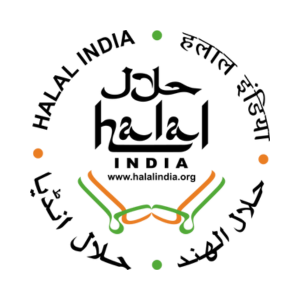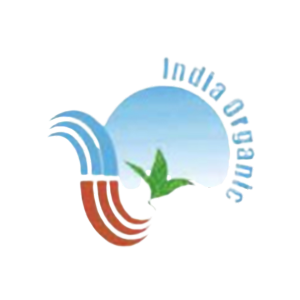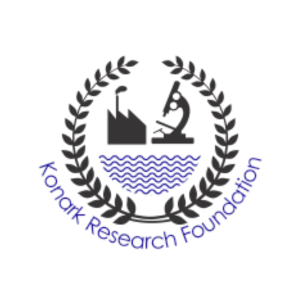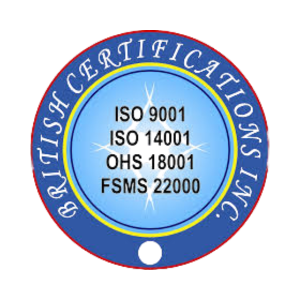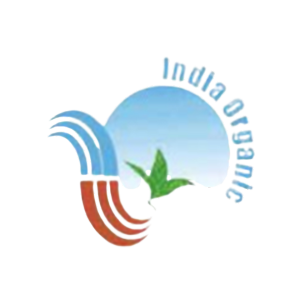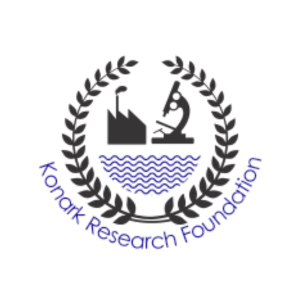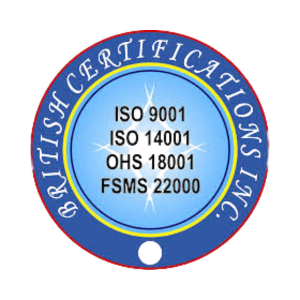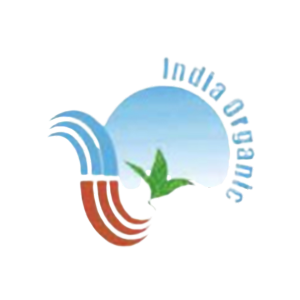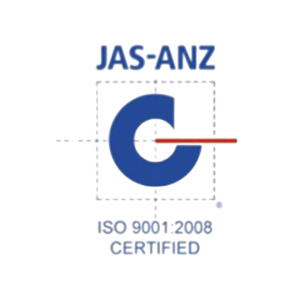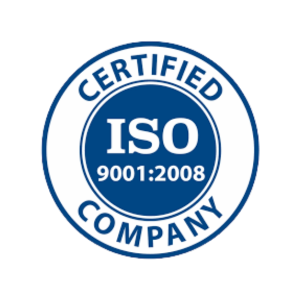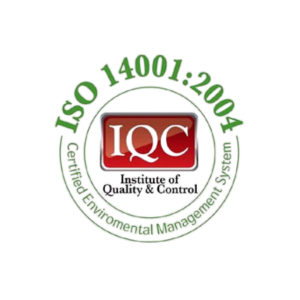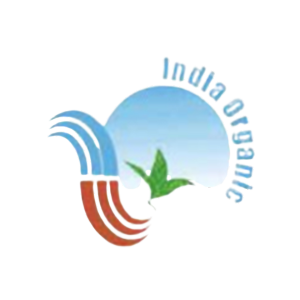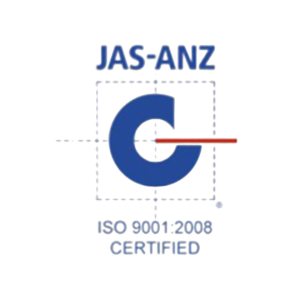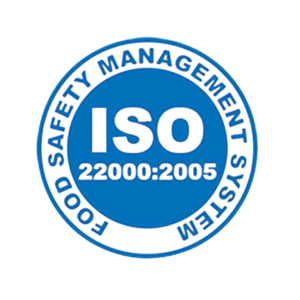Black Cohosh
Latin Name: Actaea Racemosa
Part Of Plant Used: Roots
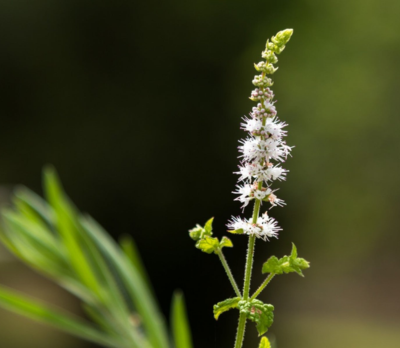
The parent plant of black cohosh is Actaea racemosa (Cimicifuga racemosa). It grows up to 2 meters high and has an upright bare branched stem, white flowers in leather-like capsules. The rhizomes and roots of the plant have been used for medicinal purposes, most commonly for menopausal symptoms, including hot flashes and night sweats, vaginal dryness, heart palpitations, tinnitus, vertigo, sleep disturbances, nervousness, and irritability. Compounds found within the Black Cohosh root include: triterpene glycosides and aromatic acid derivatives such as caffeic, isoferulic, and fukinolic acids.
Key Benefits
- Helps with Menstrual disturbances: irregular and heavy menstrual bleeding
- Reduces Hot flushes, sweating, Headaches, Dizziness and palpitations
- Gives relief to vaginal dryness
- Regulates Sleep disturbances
- Lowers Depression, Irritability, anxiety and the frequency of mood swings
- Helps with concentration, forgetfulness, tiredness
- Helps with Muscle, joint, bone pain and Osteoporosis
- Plays a role in elevating libido in women
- Constipation
Extraction Process
has been standardized for: 2.5% Triterpene glycosides in a 10:1 herb ratio
Clinical studies
Menopause is the final menstrual period, and occurs at an average age of 50 years in women. However, the number of peri-menopausal women is increasing around the world. Menopause happens because of loss of ovarian activity, and is associated with a number of early and late symptoms. Early symptoms include hot flashes, insomnia, sweating, anxiety, palpitations, headaches, poor concentration, and loss of libido. These symptoms usually last for 1 or 2 years after menopause, but may continue up to 10 years or more in some women. The symptoms may reduce quality of life, and are independent of age and other sociodemographic variables.
Menopausal Symptoms:This randomized, double-blind, placebo-controlled clinical trial was conducted over 8 weeks on 84 early post-menopausal participants who were referred to two public health care centres in Tehran, Iran, in 2011–2012. 42 randomly selected participants were administered 6.5 mg of dried extract of Black cohosh roots daily and the control groups were administered a placebo. The differences between the treatment and control groups at week 8 were significantly higher. Black cohosh greatly reduced the menopausal symptoms – psychiatric and physical of the women in the treatment group, including increased libido.
Flaxseeds
Latin Name: Linum Usitatissimum
Part Of Plant Used: Seeds
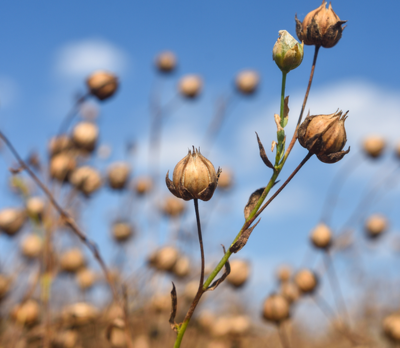
Flaxseeds are tiny golden-brown seeds loaded with lignans—plant compounds that mimic estrogen—along with soluble fibre and omega-3 fatty acids (ALA). They support heart health, help balance hormones, reduce inflammation, and may aid with cholesterol, blood sugar, and appetite control. Flax fibre also promotes satiety, supports digestion, and helps reduce the risk of clogged arteries. A tiny seed with big protective power.
Key Benefits
- Its high content of lignans act as anti-oxidants and phytoestrogens. Flaxseed contains almost 800 times more lignan than other plant foods
- Rich in Vitamins: E, K, B1, B3, B5 (Pantothenic Acid) B6, B9 (Folate)
- High content of Minerals: Potassium, Magnesium, Calcium, Iron, Zinc, Copper, Manganese
- High in Soluble and Insoluble Fibres
- Beneficial for Diabetics.
- Flaxseed helps to reduce total cholesterol and low-density lipoprotein (LDL or "bad" cholesterol).
- Flaxseeds helps reduce blood pressure.
- Controls breast pain associated with the start of the menstrual cycle.
- Flaxseed helps reduce body weight and body mass index (BMI).
- Flaxseed fibres work as an appetite suppressant
- The rich source of Omega-3 and Omega-6 fatty acids in flaxseeds protect your body from bacteria and viruses, improving your system's immunity.
- Due to their anti-inflammatory properties, it helps keep inflammations and asthma under control
- The high content of Omega-3 alpha-linolenic acid (ALA) gets metabolized in the body into DHA and EPA. The health benefits of all these Omega-3 fatty acids (ALA, EPA and DHA) assist in alleviating cardiovascular disease, hypertension, diabetes, cancer, arthritis, osteoporosis, autoimmune and neurological disorders.
Cultivation:
Himachal Pradesh, India
Extraction Process:
has been standardized for: 3% Flavonoids using Herb ratio of 5:1. Non standardized for extraction of Isoflavones, Omega 3 and 6 acids Non-Irradiated | Non-GMO | Allergen free| Natural Origin| TSE-BSE free | Melamine free | Suitable for vegan and vegetarian | Paraben free
Drug Interactions:
Flaxseed can decrease blood sugar levels. Diabetes medications are also used to lower blood sugar. Taking flaxseed along with diabetes medications might cause your blood sugar to be too low. Monitor your blood sugar closely. Flaxseed might slow blood clotting. Taking flaxseed along with medications that also slow clotting might increase the chances of bruising and bleeding.
Clinical studies
Reduced risk of breast cancer: A food frequency questionnaire was used to measure the consumption of flaxseed and flax bread by 2,999 women with breast cancer and 3,370 healthy control women who participated in the Ontario Women's Diet and Health Study (2002-2003), to investigate the association between intake of flaxseed and breast cancer risk. This Canadian study is, to our knowledge, the first to report on the association between flaxseed alone and breast cancer risk and has found that flaxseed intake is associated with a reduction in breast cancer risk.
Lower Cholesterol: Department of Human Nutrition, Faculty of Life Sciences, University of Copenhagen, Denmark conducted a double-blind randomized crossover study with 17 subjects. Three different 7-day diets were tested: a low-fibre control diet (Control group), a diet with flaxseed fibre drink (3 per day) (Flax drink), and a diet with flaxseed fibre bread (3 per day) (Flax bread). Both Flax drink and Flax bread groups resulted in decreased plasma total and LDL-cholesterol and increased fat excretion than the control group. Concluding that flaxseed dietary fibres may be a useful tool for lowering blood cholesterol and potentially play a role in energy balance.
Blood Pressure:The Department of Food and Nutrition, Government Kamla Raja Girls PG Autonomous College, Madhya Pradesh, India conducted a study which included 50 subjects with high cholesterol and divided them into two groups, a control and an experimental group. Both the groups were prescribed similar dietary guidelines. Subjects in the experimental group received 30g of roasted flaxseed powder for 3 months. The supplementation of roasted flaxseed powder for 3 months improved the BMI, blood pressure, and lipid profile of subjects with high cholesterol in the experimental group in comparison to the control group, thus proving a cardio protective effect.
Ginseng
Latin Name: Panax Ginseng
Part Of Plant Used: Root
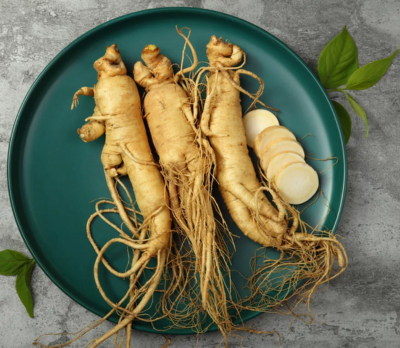
Panax Ginseng, also known as Asian or Korean Red Ginseng, is a powerful adaptogenic root long revered for its ability to energise the body, boost immunity, and enhance circulation. Its potent compounds—ginsenosides and gintonin—offer antioxidant, anti-inflammatory, and even anti-tumour benefits. Often used to support testosterone levels, sexual health, and menopausal balance, Panax Ginseng lives up to its Greek name Panax, meaning “cure-all”, by promoting vitality and overall well-being across systems.
Key Benefits
- Adaptogens are those that can help to release stress and help a person to relax. Panax Ginseng is one of the known adaptogens that helps to fight depression, anxiety, and headaches.
- Panax Ginseng helps to improve memory and the thinking skill among middle aged people.
- With enormous amounts of antioxidant, it reduces the chances of viral infection by boosting the immune system.
- Panax Ginseng has also been considered as an aphrodisiac in the medical science. It is used to treat sexual dysfunction by improving symptoms of erectile dysfunction in men and enhances sexual performances.
- The inflammatory property in panax ginseng slows down the growth of cancerous cells in the body.
- Panax Ginseng is famous for increasing libido and satisfaction among postmenopausal women.
- It helps to fight fatigue in both men and men and kicks off the tiredness even after a tiring day.
- It reduces the sugar level in the blood among diabetic people.
Cultivation:
Himachal Pradesh, India
Extraction Process :
was carried out for 20% ginsenosides using a 20:1 herb ratio.
Clinical studies
Erectile Dysfunction:
- Korea Food Research Institute, Sungnam, South Korea, conducted a systematic review to evaluate the evidence for the effectiveness of red ginseng for treating erectile dysfunction, searching 20 electronic databases without language restrictions. All randomized clinical studies (RCT) of red ginseng as a treatment of erectile dysfunction were considered for inclusion. Collectively these RCTs provide evidence for the effectiveness of red ginseng in the treatment of erectile dysfunction.
- A double-blind crossover study evaluating the efficacy of Korean red ginseng in patients with erectile dysfunction was conducted by the Department of Urology, University of Ulsan College of Medicine, Korea. Using a total of 45 patients with clinically diagnosed erectile dysfunction in a double-blind, placebo controlled, crossover study, over 8 weeks on treatment, 2 weeks of washout followed by another 8 weeks on treatment. 900mg of Ginseng was administered 3 times a day to the treatment group and a placebo was given to the control group. The Mean International Index of Erectile Function scores were significantly higher in patients treated with the ginseng than in those who received placebo. The trial concluded that ginseng can be an effective alternative for treating male erectile dysfunction.
Cognitive Function: The Korean Longitudinal Study on Cognitive Aging and Dementia conducted an observational study on the effects of lifetime cumulative ginseng intake on the cognitive function in an elder population.3918 participants completed the 2-year and 4-year follow-up evaluations. Subjects were categorized according to cumulative ginseng intake in no use group, low use group, and high use group. The high use group showed higher CERAD total scores compared to the no use group. The trial concluded in confirming that a prolonged use of ginseng for longer than 5 years may be beneficial to cognitive function in late life.
Diabetes:
- Risk Factor Modification Centre, St. Michael's Hospital, Canada and the Department of Nutritional Sciences, Faculty of Medicine, University of Toronto, Canada, conducted a research review to study the effect of ginseng on glycemic control through data analysis of randomized controlled trials in people with and without diabetes. The result of the review showed that Ginseng significantly improved fasting blood glucose in people with and without diabetes.
- The Human Cognitive Neuroscience Unit, Division of Psychology, Northumbria University, UK, conducted a study to assess the glycaemic effects of single doses of Panax ginseng in young healthy volunteers, using 30 participants through a placebo-controlled, double-blind cross-over. The thirty participants received three treatments: placebo; 200mg Ginseng; 400mg Ginseng. The study demonstrated that ginseng alone significantly lowers fasting blood glucose levels.
Menopausal: Department of Obstetrics and Gynecology, Institute of Women's Life Medical Science, Korea, conducted a double-blind, randomized, placebo-controlled clinical trial to investigate the effects of Red Ginseng on surgical menopause symptoms in premenopausal women with gynaecologic cancer, using 55 premenopausal women diagnosed with gynaecologic cancer. The study was performed at Severance Hospital in Seoul, Korea. Patients were randomly assigned to two groups Treatment group of 29 patients, receiving 3g red ginseng per day or a placebo control group of 26 patients, for a period of 12 weeks. Through the study, Red ginseng did not show absolute relief of surgical menopause symptoms in premenopausal women after gynecologic cancer surgery. However, the study did demonstrate that KRG may be effective in reducing sexual complaints.
Sexual Function in women: The Psychiatric Research Center, Roozbeh Hospital, Iran conducted a 6-week, double-blind, randomized, placebo-controlled clinical trial, using 31 participants in each group – controlled and treatment, to evaluate the effects of a combined vitamin E and ginseng supplement on enhancement of female sexual function. The volunteers were randomly allocated to receive the supplement (100 IU vitamin E, 67 mg Korean ginseng, and 40 mg Siberian ginseng) or placebo daily. The treatment group found significantly heighted levels of sexual desire and satisfaction compared to the placebo group. However, the study could not find additional benefits for the vitamin E and ginseng supplement over placebo in enhancing the overall sexual function.
Antioxidant:Liver and Immunology Research Center, Daejeon Oriental Hospital, South Korea conducted a double-blind randomized controlled design, using 82 healthy participants (21 men and 61 women). They were divided into three groups, the control group received a placebo and the other two groups received the ginseng extract (1g and 2g/day respectively) for 4 weeks. The findings indicate that ginseng enhanced the antioxidant defence mechanism in the treatment groups and the results reinforce the use of Panax ginseng as a potential antioxidant supplement.
Liquorice
Latin Name: Glycyrrhiza glabra
Part Of Plant Used: Root
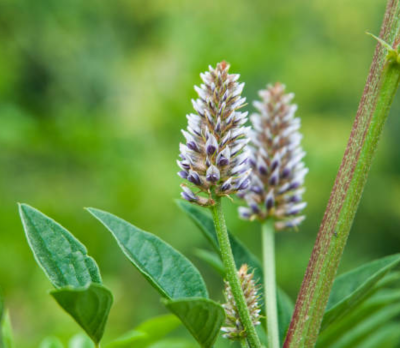
Used for over 4,000 years across Ayurveda, Traditional Chinese Medicine, and Greco-Arab healing systems, Liquorice (Glycyrrhiza glabra) has long been valued as a harmonizer herb — one that adapts to multiple systems, modulating both stress and hormone pathways. Liquorice is especially relevant in women’s health as it supports endocrine, adrenal, and digestive balance — key axes that govern hormonal health. In EstroPhy, Liquorice is included not just as a digestive soother, but as a phytoestrogenic adaptogen that helps preserve hormonal rhythm, reduce cortisol-induced estrogen suppression, and improve mood and energy balance.
Key Benefits
- Menopausal Support: Helps manage hot flashes, night sweats, irritability, and mood instability.
- PMS & Cycle Regulation: Reduces menstrual cramps, breast tenderness, and fluid retention.
- Adrenal Burnout Recovery: Enhances resilience to chronic stress, protects hormonal rhythm.
- Estrogen Modulation: Offers gentle, non-hormonal estrogenic activity for both deficiency and estrogen-dominant states.
- Anti-inflammatory Uplift: Reduces systemic and uterine inflammation that interferes with hormone function.
- Digestive Ease: Its mucoprotective properties help reduce bloating, acid reflux, and gut-mediated estrogen reabsorption.
Cultivation:
Punjab, Rajasthan, India
Extraction Process
has been standardized for: NLT 11% Glycyrrhizin.
Clinical studies
Menstrual regulation and hormonal support in PCOS: A randomized controlled trial conducted across community settings in Australia evaluated the safety and effectiveness of combining herbal medicine with lifestyle intervention in overweight women with polycystic ovary syndrome (PCOS). A total of 122 women were randomized to receive either a lifestyle plan alone or in combination with herbal tablets containing Cinnamomum verum, Glycyrrhiza glabra, Hypericum perforatum, Paeonia lactiflora, and Tribulus terrestris, over a period of 3 months. The combination group showed a 32.9% reduction in oligomenorrhoea/amenorrhoea, along with significant improvements in BMI, insulin levels, LH, blood pressure, mood, and pregnancy rates (all p < 0.05). The study concluded that herbal supplementation alongside lifestyle changes offers a safe and more effective approach for improving menstrual regularity, metabolic health, and fertility in women with PCOS.
Estrogen modulation in menopause: A molecular pharmacology study conducted at the University of Illinois and Mahidol University evaluated the estrogenic and anti-estrogenic activity of key compounds in Glycyrrhiza glabra (liquorice) root extracts, commonly consumed by menopausal women as natural alternatives to hormone replacement therapy. Researchers isolated and analyzed seven liquorice-derived compounds—Glabridin, Calycosin, Methoxychalcone, Vestitol, Glyasperin C, Glycycoumarin, and Glicoricone—alongside known phytoestrogens Liquiritigenin (Liq) and Isoliquiritigenin (Iso-Liq). Using estrogen receptor (ER) binding assays and gene expression models, the study demonstrated that Liq, Iso-Liq, L2 (Calycosin), L3 (Methoxychalcone), L4 (Vestitol), and L6 (Glycycoumarin) act as estrogen receptor agonists, capable of activating ER-regulated genes. Notably, L3 and L4 showed estrogenic efficacy nearly equivalent to estradiol (E2), albeit with much lower potency (~10,000-fold less). In contrast, Glabridin (L1), Glyasperin C (L5), and Glicoricone (L7) functioned as partial estrogen antagonists, potentially offering dual modulatory (SERM-like) effects. This study supports the view that liquorice root contains a spectrum of compounds that act as selective estrogen receptor modulators (SERMs), offering natural, receptor-specific hormone support with both estrogenic and anti-estrogenic activity, ideal for menopausal symptom relief.
Hot flash reduction in postmenopausal women:A randomized, double-blind clinical trial was conducted across medical universities in Iran to evaluate the effects of liquorice (Glycyrrhiza glabra) supplementation compared to conventional hormone replacement therapy (HRT) in managing hot flash symptoms in postmenopausal women. Sixty women were randomized to receive either 1140 mg/day of liquorice extract or HRT (conjugated estrogen 0.312 mg + medroxyprogesterone 2.5 mg/day) for 90 days. The study measured frequency, duration, and severity of hot flashes, along with contextual and demographic variables. Results showed that liquorice was as effective as HRT in reducing the number and duration of hot flashes, though HRT was superior in reducing severity. There were no significant differences across demographic variables (age, education, occupation, menopause duration) between the two groups. The study concluded that liquorice offers a safe, plant-based alternative for managing hot flashes, particularly effective in reducing frequency and duration, while posing fewer risks than synthetic hormone therapy.
Lodhra
Latin Name: Symplocos racemosa
Part Of Plant Used: Bark
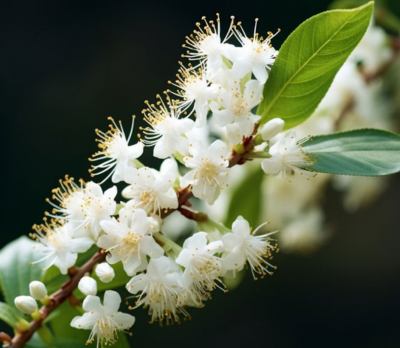
Lodhra is a revered bark-based herb in Ayurveda known for its powerful influence on female reproductive health, skin repair, and anti-inflammatory activity. The bark of Symplocos racemosa is rich in bioactive compounds like symplocoside, flavonoids, and tannins, which provide its astringent and toning properties.
Key Benefits
- Female reproductive health: Used in conditions like heavy menstruation (menorrhagia), white discharge (leucorrhoea), PCOS, and uterine prolapse due to its astringent and tonifying effects on uterine tissues.
- Hormonal balance: Helps regulate estrogen dominance and promotes menstrual regularity.
- Wound healing and skin repair: Traditional remedy for inflamed or damaged skin, acne, and pigmentation.
- Anti-inflammatory: Reduces swelling and pain in uterine, gastrointestinal, or skin conditions.
- Digestive health: Aids in relieving diarrhea, dysentery, and inflammation of the gut lining.
Cultivation:
Sub-Himalayan belt, Assam, Bengal, Maharashtra
Extraction Process
has been standardized for: 10% Tannins and 0.1% Alkaloids using a 10:1 herb ratio and ensuring the content of natural steroids remains intact in the extraction process
Clinical studies
- For leucorrhoea management (Shweta Pradara): Leucorrhoea is a common gynecological issue marked by abnormal vaginal discharge, often accompanied by itching, discomfort, and odor. A clinical study involving 30 women diagnosed with Shweta Pradara showed significant improvement following administration of Lodhra bark decoction twice daily for 15 days. Symptoms such as discharge volume, consistency, and itching were markedly reduced. The astringent and anti-inflammatory action of Lodhra, due to its rich tannin content, was key to the therapeutic effect. (AYU Journal, 2012).
- For menstrual regulation and hormonal balance: Menstrual irregularities such as oligomenorrhea and hormonal imbalance (often seen in PCOS) are increasingly prevalent in reproductive-age women. In a pilot clinical trial with 40 women presenting with irregular menstruation, Symplocos racemosa extract was administered over 8 weeks. The study observed improved menstrual regularity, enhanced uterine tone, and mild normalization of LH:FSH ratio, supporting the herb’s action in regulating female hormones and restoring endometrial health. (International Journal of Ayurvedic Medicine, 2016).
- For acne and skin inflammationChronic acne and inflammatory skin conditions can severely affect confidence and quality of life, especially in younger populations. A comparative clinical trial involving 60 patients evaluated the efficacy of a herbal cream containing Lodhra extract in managing acne vulgaris. The group using Lodhra cream showed significant improvement in both inflammatory (papules, pustules) and non-inflammatory (comedones) acne, along with reduced sebum secretion and skin irritation. The herb’s tannins and flavonoids were attributed to its soothing and astringent effects. (International Journal of Research in Ayurveda and Pharmacy, 2015).
Shatavar
Latin Name: Asparagus Racemosa
Part Of Plant Used: Root
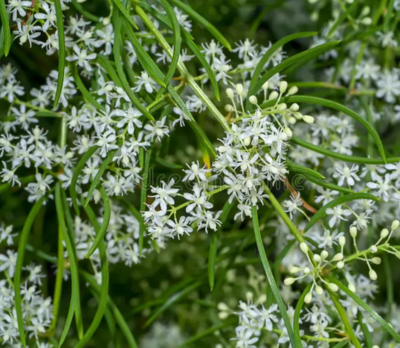
Shatavar literally means 'the plant of one hundred roots' which has been cleverly captioned into 'she who has one hundred husbands' as it gives women boundless reserves. It’s ayurveda’s go-to tonic for women — just like Ashwagandha is for men. Known as the “Queen of Herbs” for female vitality, this powerful adaptogen helps balance hormones, support reproductive health, and build resilience against stress. Its roots are rich in steroidal saponins (shatavarins), immune regulators, isoflavones, essential minerals, and fatty acids. Shatavar supports menstrual balance, fertility, pregnancy, postpartum recovery, and eases menopausal symptoms like hot flashes and dryness. Whether it’s emotional or physical, this herb helps women take back control.
Key Benefits
- ‘Queen of the herbs’, equivalent to Ashwagandha which is labelled as the ‘King of Herbs’.
- Shatavar is high in saponins. Saponins are compounds with high antioxidant abilities.
- Adaptogenic in nature, therefore helps decrease stress & balances hormones.
- Helps with the monthly menstrual cycle. Shatavar’s main constituents are steroidal saponins which are oestrogen regulators. This helps regulate menstrual cycles, manage PMS symptoms, alleviate menstrual cramps and control the amount of blood loss per cycle. Shatavar greatly helps with reducing fluid retention and therefore helpful with the uncomfortable bloating often suffered before a period.
- Helps increase milk production for lactating mothers.
- Acts as an aphrodisiac by increasing the blood flow to the female genital area, enhancing sexual sensation, sensitivity and increasing vaginal lubrication. Its hormone balancing effect, makes it useful for women who experience loss of libido as a side effect of the menopause.
- Due to its oily, heavy nature, Shatavar nourishes the female reproductive system from within to relieve menopause symptoms such as vaginal dryness, hot flashes and insomnia. Shatavar also stimulates and balances the production of happy hormones; endorphins, serotonin and dopamine – so bye-bye to mood swings, irritability and menopause induced depression.
- Boosts the immune system by stimulating the immune cells. The Saponins in the roots enhance the body’s resistance during normal and immune-suppressed conditions. Saponins also stimulate the cells that fight infection, weaking infection-causing cells.
- It improves digestion by increasing the activity of digestive enzymes lipase and amylase. Lipase aids fat digestion whereas amylase helps with the digestion of carbohydrates.
Cultivation:
Madhya Pradesh, India
Extraction Process
has been standardized for: 20% Steroidal saponins, known as shatvarins.
Clinical studies
Lactation stimulant: A Double-Blind Randomized Clinical Trial for assessing the role of Shatavar in increasing the flow of a lactating mother was conducted by the Department of Dravyaguna, Institute of Post Graduate Ayurvedic Education and Research, Kolkata, India, using 60 lactating mothers by measurement of changes in their prolactin hormone levels during the study. The oral administration of Shatavar led to more than three-fold increase in the prolactin hormone level of the volunteers in the research group as compared to the control group.
Menopausal Symptoms: A double-blind, randomized, placebo-controlled trial to assess the safety and efficacy of Shatavar in reducing menopausal symptoms, was conducted by the Integrated Health Group Pty. Ltd, Brisbane, Australia and the Sydney Medical School, Australia with 117 healthy women, aged 40–65 years using a formulated Ayurvedic dose composed of 75 mg Tinospora Cardifolia (Giloy), 100 mg Asparagus racemosus (Shatavar), 100 mg Withania somnifera (Ashwagandha) and 225 mg Commiphora mukul (Guggul) per capsule, administered as one capsule two times per day over a period of 12 weeks. There was a significant reduction in total hot flushes, daytime hot flushes and night sweats in the active treatment group compared to the placebo group, indicating that the treatment was effective for reducing menopausal symptoms in healthy menopausal women over a duration of 12 weeks.
Ovulation: A randomized controlled trial was carried out at the National institute of Unani medicine Hospital, Bangalore to evaluate the efficacy of Shatavar in stimulating follicular growth and ovulation in anovulatory infertility (an ovulation cycle where a woman skips her ovulation, usually PCOS related), using 40 randomly allocated women to test group (20 ladies) and control group (20 ladies). All women were between the ages 18-40, infertile with menstrual irregularities, polycystic ovarian disease (PCOD) & spouse normal sperm analysis.
The test group was administered 6g of Shatavar powder twice daily from day 1-14 of cycle and in control group, clomiphene citrate (a medication used to treat fertility) 50 mg once daily from day 2-6 of cycle was administered orally for 2 consecutive cycles. It was concluded that the effect of shatavari was comparable with that of clomiphene citrate in stimulating follicular growth & ovulation, but not as effective as clomiphene citrate to achieve conception.
Urinary Tract Infections: A clinical trial on the efficacy of Shatavar Root Powder in controlling urinary tract infection was conducted by the Department of Dravyaguna Vijnana, Govt. Ayurveda College, Thripunnithura, India, using 30 patients administered 6 g of Shatavari moola choorna (3 g each, morning and evening) before food along with cold water as adjuvant. Responses of the patients to the drug intervention were assessed before and after the treatment and follow up after one month. The trial revealed that Shatavar was not only effective in reducing the pus cell count, epithelial cell count but also boost the immune mechanism of the body, thereby improving the general health and preventing the recurrence of infection.
Premenstrual:A clinical study to assess the effect of Shatavar in premenstural disorders which start approximately one week prior to onset of menses and suppressed after menstrual cycle, with mood swings, difficulty in concentrating, depressed mood, anxiety, tension, sleep disturbance along with physical symptoms like joint pain, muscle pain and breast tenderness. The study was conducted by the Department of Mano Vijnan evum Manasa roga, SDM Ayurveda College, Udupi, India, using 30 patients suffering from Premenstrual dysphoric disorder. Each were administered 5g of Shatavar Churna, three times a day for 90 days. The trial reveals that Shatavar has an effective role in premenstrual dysphonic disorder.
Soy Isoflavones
Latin Name: Glycine max
Part Of Plant Used: Fruit
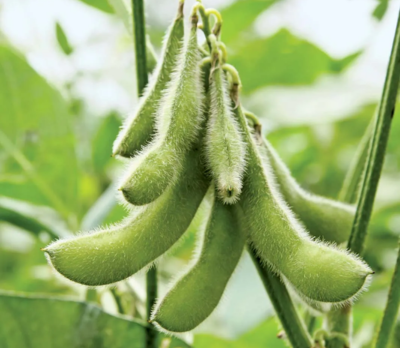
Soy isoflavones are compounds found in soybean. Soy contains the highest concentration of isoflavones, a type of plant oestrogen (phytoestrogen) that is similar in function to human oestrogen but with much weaker effects. The main isoflavones in soy are genistein and daidzein. When you eat soy, bacteria in your intestines break it down into its more active forms. Once in your body, soy isoflavones bind to the same receptors as oestrogen. Receptors are like docking stations on the surface of cells. When isoflavones bind to some receptors, they mimic the effects of oestrogen. When isoflavones mimic oestrogen, they help reduce hot flashes and other symptoms of menopause, osteoporosis and antiaging.
Key Benefits
- Isoflavones are considered phytoestrogens, meaning that they are similar in structure to the female hormone, oestrogen and mimic the effects of oestrogen in women.
- They are packed with fibre, protein, omega – 3 fatty acids and antioxidants.
- Isoflavone supplements help improving fatigue and irritability and decreasing hot flashes in menopausal symptoms.
- Effective product for natural hormone replacement therapy (HRT).
- Help reduce hot flashes and anxiety during menopause.
- Considered as an anti-oxidant compound so they reduce damage caused by free radicals.
- Phytoestrogens in Soy Isoflavones influence serotonin levels and the sleep-wake cycle. Isoflavones have similar effects on sleep quality as oestrogen replacement therapy, which has shown to alleviate symptoms of insomnia and increase sleep efficiency in postmenopausal women.
- Benefit in cognitive functions.
Extraction Process:
has been standardized for: 40% Isoflavones by HPLC
Allergies:
People with severe allergies to soy products or those who are sensitive to soy lecithin should avoid foods made with the ingredient.
Clinical studies
Heart health: A double blind randomised parallel study involving 200 women (average age of 55 years) in the early menopause who were randomised to 15 g soy protein with 66 mg isoflavone (SPI) OR 15 g soy protein alone (depleted of all isoflavones; SP) given as a snack bar between meals daily for 6 months. Supplementation with soy protein with isoflavones for 6 months significantly improved the Cardiovascular risk markers and calculated Cardiovascular risk at 6 months during early menopause compared to soy protein without isoflavones. The conclusion of the trial was that hormone replacement therapy may be beneficial for cardiovascular disease risk in post-menopausal women. Soy isoflavones act as selective oestrogen receptor modulators in HRT.
Menopause: Menopausal estrogen loss leads to an increased bone loss. A double-blind randomized parallel study in which 200 women within 2 years after the onset of their menopause were randomized to 15 g soy protein with 66 mg isoflavone (SPI) or 15 g soy protein alone (SP), daily for 6 months. The group administered SPI showed a significant reduction in fasting glucose, fasting insulin, insulin resistance, and systolic blood pressure whereas no significant changes in these parameters was observed with the group that was administered SP. In conclusion, soy protein with isoflavones may confer a beneficial effect on bone health and a significant improvement of cardiovascular risk markers
The study was conducted by the Department of Academic Diabetes, Endocrinology and Metabolism - Hull York Medical School, UK. and the Department of Academic Cardiology, University of Hull, UK.
Perimenopausal and Postmenopausal: An observational pilot study was done involving 29 perimenopausal and 21 postmenopausal women prescribed 100 mg soy isoflavones for 12 weeks by the Department of Pharmacology, Rohilkhand Medical College, to study the effect of soy isoflavone supplementation on the menopausal symptoms in perimenopausal and postmenopausal women.Menopause Rating Scale (MRS) questionnaire was administered to the patients before starting soy isoflavone therapy and at the end of treatment. Responses were analysed using Statistical Package for Social Sciences (SPSS) software 23.0. Total score of both the groups were comparable at baseline. After 12 weeks of treatment, total scores improved significantly by 19.55% perimenopausal and 12.62% in postmenopausal women. The greatest improvement was seen in scores of hot flashes for both the groups and the least improvement was shown by symptoms of urogenital subscale.Soy isoflavone improves the MRS score among both the perimenopausal and postmenopausal women.
Blood pressure: A study was commissioned to The Key Laboratory of Clinical Cardiovascular Genetics, Ministry of Education and Sino-German Laboratory for Molecular Medicine, China with the objective to evaluate the effect of dietary soy isoflavones on blood pressure. A total of eleven randomized controlled trials were reviewed by the team. The review concluded that Soy isoflavones had an effect of lowering blood pressure in hypertensive subjects, but not in non-hypertensive subjects.







